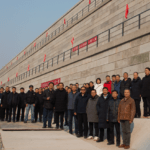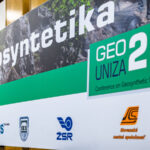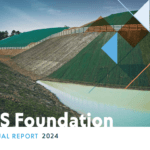| Application | Subgrade Stabilization and Rein-forcement | Job owner | Iberdrola Renewables, LLC |
| Location | Hertford, NC | Engineer | Barr Engineering |
| Product | Mirafi® RSi-Series | Contractor | Wanzek Construction |
| Quantity | 205,000 yd2 – RS380i
120,000 yd2 – RS580i |
Date of Installation
(m/y) |
December 2015 – June 2017 |
THE CHALLENGE: What was the objective of project?
What were the soil conditions for the project (CBR, type of soil, etc.)
The contractor was responsible for constructing over 66 miles of access roads for the 104 turbines in the first phase of the Desert Wind Farm project. Since these access roads were the only source of entry, they had to support construction traffic over soft, wet North Carolina farmland soil. They were used by aggregate and concrete trucks, delivery tractor trailers (with heavy turbine components) and for moving the cranes between the wind turbines. The original design specified geogrid with 10” of Dense Graded Aggregate (DGA). The subsurface investigation revealed that the in-situ soils consisted of peat and organic clays with a CBR value as low as 0.7% and silty/clayey sands with a CBR value of less than 4.0%.
The end of 2015 and 2016 proved to be unusually wet times in costal NC. From the start of the project, the grading contractor had troubles with the roadways being too saturated. Multiple attempts at stabilizing the subgrade with geogrid were unsuccessful. The mud oozed through the apertures causing severe rutting and eventually the geogrid ruptured in multiple locations and wrapped around the truck axles.
The only way to stabilize the roads was to add additional stone. However, the aggregate imported by railcars was very expensive. The contractor tried cement stabilization as an alternative, however this method required too much cement and an excessively long curing time. This option was immediately ruled out for both time and cost reasons.

THE DESIGN: What were the recommendations of overcoming the challenge/objective? Were any other op-tions considered or tried? Did the designer use MiraSpec and if so what was the unreinforced design vs. the reinforced design?
A site visit was made by one of TenCate’s Engineering Business Managers to observe the subgrade and to perform field vane shear tests to determine the CBR values of the soils. The field vane shear tests confirmed that the soils were less than 1.0% in many locations. Designs were recommended after the engineer evaluated the subgrade soils along with the anticipated truck and crane loadings. The parties agreed to the need for a high modulus reinforcement product that would integrate (1) superior water flow characteristics to minimize pore water pressure build-up, (2) AASHTO M288 separation criteria to minimize fines contamination into the overlying aggregate. Three different de-sign options using Mirafi® RSi-series were recommended to make the project more economically feasible.
THE CONSTRUCTION: Installation. Any special benefits our product provided to speed up or improve construction?
The contractor called the local TenCate distributor on a Saturday and asked to try the “orange fabric”. The distributor brought 3 rolls of Mirafi® RS580i to the site that same day and the contractor was able to place 900’ of roadway in 45 minutes. The contractor was so excited with the results, they bought the remaining rolls from the distributor’s inventory on Monday and ordered another truckload at the same time. Depending on how soft and wet the subgrade was, the contractor used either Mirafi® RS380i or RS580i with approximately 10” of aggregate. Occasionally the contractor had to use a little more aggregate in some of the most extreme cases of saturated soils. The contractor successfully installed approximately 325,000 yd2 of Mirafi® RSi-series.
THE PERFORMANCE: How did our material(s) make a difference? What was achieved? What was the cost savings/value proposition that the product allowed?
Due to the integration of the separation, reinforcement, filtration and confinement functions into a single product, Mirafi® RS380i and RS580i allowed the contractor to optimize overall costs while minimizing construction delays of the access roads over soft, saturated soils.
With the demand for renewable energy growing, TenCate Geosynthetics will continue to provide the highest quality geosynthetic solutions to create a safe and successful environment.
Further Information
For more information on Tencate Geosynthetics Americas visit www.tencate.com or contact J.McKay@TEN-CATE.COM






















